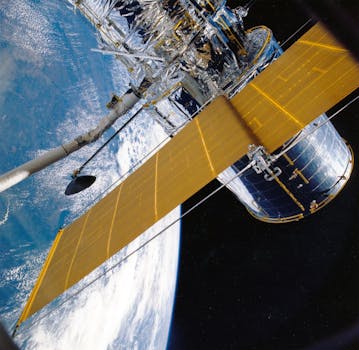
Navigating the Skies: Insights into Recent Satellite Telecommunications Innovations
Satellite telecommunications have come a long way since the launch of the first commercial communications satellite, Intelsat 1, in 1965. Today, satellites play a vital role in global communications, providing connectivity to remote and underserved areas, enabling international communications, and supporting a wide range of applications, from navigation and weather forecasting to broadband internet and television broadcasting.
Recent years have seen significant advancements in satellite telecommunications, driven by technological innovations, changing market demands, and the need for more efficient and cost-effective solutions. In this article, we will delve into the latest developments in satellite telecommunications, exploring the key trends, innovations, and challenges shaping the industry.
Advances in Satellite Technology
One of the most significant recent advancements in satellite telecommunications is the development of high-throughput satellites (HTS). HTS satellites use advanced technologies, such as spot beams and frequency reuse, to provide higher bandwidth and faster data speeds than traditional satellites. This has enabled the delivery of high-speed broadband services, including internet, video, and voice communications, to a wide range of users, from consumers and businesses to governments and institutions.
Another important innovation is the emergence of small satellites, also known as smallsats. Smallsats are smaller, lighter, and less expensive than traditional satellites, making them more affordable and accessible to a wider range of organizations and countries. They are also more agile and flexible, allowing for faster deployment and greater maneuverability in orbit.
Next-Generation Satellite Constellations
In recent years, there has been a surge of interest in next-generation satellite constellations, which involve the deployment of large numbers of small satellites in low Earth orbit (LEO). These constellations are designed to provide global coverage, high-speed connectivity, and low latency, making them ideal for a wide range of applications, including broadband internet, IoT, and 5G networks.
One of the most high-profile examples of a next-generation satellite constellation is SpaceX’s Starlink, which aims to deploy up to 42,000 small satellites in LEO to provide global broadband coverage. Other companies, such as OneWeb, Amazon’s Kuiper Systems, and Telesat, are also developing their own satellite constellations, each with their own unique features and capabilities.
Challenges and Opportunities
Despite the many advances and innovations in satellite telecommunications, there are still significant challenges to be addressed. One of the biggest challenges is the issue of space debris, which poses a threat to the safety and sustainability of satellite operations. As the number of satellites in orbit increases, so does the risk of collisions and other accidents, highlighting the need for more effective debris mitigation and removal strategies.
Another challenge is the need for greater regulatory clarity and coordination, both nationally and internationally. As the satellite industry continues to evolve and grow, there is a need for more effective regulations and standards to ensure that satellite operations are safe, secure, and sustainable.
Conclusion
In conclusion, recent advancements in satellite telecommunications have transformed the industry, enabling faster, more efficient, and more cost-effective communications solutions. As the industry continues to evolve, we can expect to see even more innovative technologies and applications emerge, from advanced satellite designs and propulsion systems to new uses for satellite data and analytics.
Whether you are a satellite operator, a service provider, or simply a user of satellite-enabled services, it is an exciting time to be involved in the satellite telecommunications industry. With its rich history, rapid evolution, and limitless potential, the sky is truly the limit for this dynamic and rapidly changing field.

